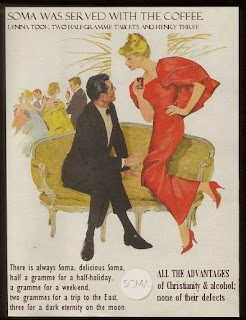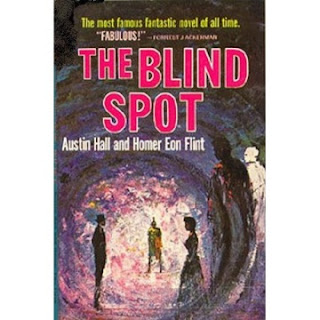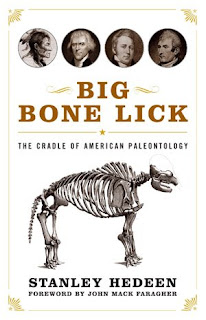Sunday, July 27, 2008
Portland Flips You Off
Animated flip books – those old-timey, handheld series of photos or drawings that vary ever so slightly from page to page – have been working our thumbs since the late 1800s. But it took a 26-year-old queer dude from Texas, “fliptographer” Jason Miers, to figure out how to make it brand new for this century. Miers, a former med student who now lives in Portland, created the technology that allows him to make fliptography books lickety-split, whether it be at bar mitzvahs or gay bars. Miers’ happy-time machine records seven seconds of video of a moving object–say, a cute guy stripping his shirt off–which is then captured by a computer and spit out as a book.Speaking of which, check out this weirdly haunting mechanized flipbook art installation by Diane Landry, using an old dictionary for the pages.

Noted Without Comment
Saturday, July 26, 2008
Fiend Folio
Paul goes on to note: "Thanks to a careful inventory of Durham folio pages performed in 1905, a number of its identifying marks are already well-known. There's a patched hole in the colophon, for instance; there's a broken clasp on the outside of the book; there's a specific annotation regarding Troilus and Cressida...The Durham thief faces a particularly nasty bit of bad luck, though. Although reports indicate that a potentially telltale marked-up endpaper is now missing in this copy, it's highly unlikely that a thief would have sliced out the title page, with its iconic portrait of Shakespeare."
Now here I'm proceding on speculation, based on the reports about the theft in the Washington Post. Here's how the Post described the scene at the Folger when the alleged thief walked in with the book:
Out of his bag, he pulled an old book. Flimsy, no binding, big pages. Said he wanted the Folger book detectives to check it out. Could it be a genuine 400-year-old Shakespeare? he wondered.... A few of the opening pages of the version presented to the Folger had been removed.
So much for using the broken clasp as an identifier.
[Weekend Stubble shakes its fist.]
Damn you, thieves! Have you no sense of fair play?
He notes a thief might indeed still turn a profit by breaking a folio up into individual plays -- a notorious practice with medieval works -- but I think the fact that this one wasn't broken up is telling. Namely, to sell a complete Folio involves one shady transaction for which one has no good provenance to present to a buyer. Selling it in parts involves dozens of risky transactions. And that might explain why a stripped but unbroken Folio was, apparently, dumped off onto the (perhaps unwitting) Raymond Scott for a mere deposit of £5000.
Weirdly enough, a run through Google News and Lexis-Nexis shows that the one newspaper to continue reporting on this story was last Sunday's Daily Mail of London -- a publication not exactly known for lit coverage. It's as if we had the National Enquirer covering a political story. (Oh... right.)
The Mail actually tracked down the alleged Cuban source of the Folio, one "former Castro bodyguard Odeiny 'Danny' Perez." A Castro bodyguard... ah, priceless! Though either Perez or the Daily Mail seem to have their facts mixed up...
Um, guys? It wasn't printed on goatskin.
Mr Perez, shown a photograph of the cover of the rare Shakespeare manuscript, shook his head and said: 'That is not the book I gave to Raymond.
'I have never seen it before. My book was called Tempest and had the front and back covers missing. Some of the pages were also missing.'
He said the book he gave the Briton was printed on paper. The First Folio, a collection of 36 Shakespeare plays printed seven years after the Bard's death, is printed on goatskin.
And there's also a simple explanation for why Perez might think his book was called The Tempest. First, it sounds like the Folio's title page may have been sliced off. And second, the first play in the Folio -- whose title you then might well mistake for being that of the whole book -- turns out to be....
The Tempest.
Sunday, July 20, 2008
Finally, an Organization for Me!

Saturday, July 19, 2008
The Gang That Couldn't Steal Stright

I'm in Slate this week with helpful advice for book thieves:
Individual folios have been so obsessively analyzed that they might as well be Lojacked at this point. My favorite anecdote of the whole thing was the last hapless attempt to swipe a Folio:When Raymond Scott—the colorfully eccentric 51-year-old book dealer, champagne connoisseur, and shiny-suited wooer of nightclub dancers—walked into the Folger Shakespeare Library in Washington, D.C., recently to get a 1623 First Folio of Shakespeare appraised, he didn't realize, he says, he'd be accused of possessing a folio stolen from the Durham University library in England. His folio, he claims, was simply a friend's lucky find in Cuba. As Scott proclaims in a Washington Post profile today, at the time of the 1998 robbery at Durham University, "I wouldn't have known the difference between a First Folio Shakespeare and a paperback Jackie Collins." The Folger's expert verification of the stolen Folio's identity, he contends, is just plain wrong.
Just how much Scott knows about rare first editions, only time—or perhaps a plea bargain—will tell. But what he clearly doesn't know is what any folio scholar could tell him: that aside from a face-melting Ark of the Covenant, a Shakespeare First Folio is the lousiest loot in the world to steal.
It's because of obstacles like these that the last theft of a First Folio—from the Williams College library in 1940—also ended disastrously. Four months after gaining entry with the forged papers of a fictitious "Professor Sinclair E. Gillingham" of Middlebury College, the thief turned himself in and fingered three fellow conspirators. The reason? The folio they'd stolen was hot enough to roast marshmallows over. It was unsalable. This didn't exactly end their criminal careers, as folio historian Harold Otness has noted: "The sentencing judge received a letter asking for leniency for the aircraft worker [of the gang] because he was designing a special military plane. That letter was a forgery."
I love that story so much that I may just have to adopt Sinclair G. Gillingham as a pen name. One detail that I left on the cutting-room floor: none of the four conspirators had ever graduated high school. "Professor Gillingham" was, in fact, a shoe salesman.
Dizzyheads, take note: before hitting Williams, the Folio stash that the gang first went to scope out was at... the former University of Buffalo.
Sunday, July 13, 2008
The Window Into the American Mind
Guizhou University sits on the outskirts of Guiyang City, the sleepy capital of China’s poorest province. Undergraduate tuition is the equivalent of $250 per term, books and housing included. A meal of pulled noodles, hot pot or sweet and sour pork runs about $1, while the soup-and-rice special in the dining hall costs a dime. The two most popular courses at the school are Mao Tse Dung Economic Thought and an early morning Kung Fu class that meets on the soccer field.
Life at Gui Da, as the school is locally known, is economically, socially, culturally and politically removed from life in America. Despite this, the school is home to an informal — and unlikely — group: a Kurt Vonnegut Fan Club.
“We don’t understand all of what Vonnegut wrote,” the club’s president, Isabel Yuan, told me, “But we think reading him helps us understand America.” Isabel and I spoke over a steaming pot of bitter pu’ er tea in a restaurant not far from the Gui Da campus. She sat upright, her black eyes focused on the porcelain cup in her hand. “Vonnegut,” she continued, “is our window into the American mind.”...
Saturday, July 12, 2008
"Bite Me"
 No, really -- it's my piece in the new Believer music issue:
No, really -- it's my piece in the new Believer music issue:The auditory capacities of teeth may be demonstrated through a simple test. First, find a quiet room to sit in. If you are wearing an analog watch, remove it from your wrist. Open your mouth wide and suspend the timepiece inside your mouth without actually touching your teeth. You will hear a quiet ticking. But close your teeth upon the watch, and you will hear a loud ticking.This is because you are hearing with your teeth....
I've been meaning for ages to do an article on the weird world of bone conduction and osteophones. I blame my fascination with the subject on exposure at an early age to a Bone Fone ad in the November 1980 issue of Modern Mechanics.
Some links to the peculiar stuff mentioned in the article:
• A heartwarming scene of people biting on rubber "sound catching" audiphone fans to hear music.
• This amazing close-up illustration from 1882 of an audiphone in action.
• Electric dentures! ... Electric dentures! ... Need I say more?
• I think the 1959 patent filing on this one speaks for itself:
The present invention relates generally to a smoking pipe hearing aid and more particularly to an acoustic smoking pipe apparatus wherein a single unit functions as a tobacco pipe and also as a self-contained hearing aid utilizing osseous or bone conduction, i.e., conversion of sound waves to mechanical vibrations which are transmitted through the teeth and bone structure of the head to the auditory organs."Of course I'm listening to you, honey... I'm smoking my pipe."
Sunday, July 06, 2008
A New Life Awaits You in the Off-World Ad Agencies!
A few prime examples (and there are many more at Mark Rayner's site):


And my personal favorite, for the absolutely spot-on nailing of rhetoric and design -- whoever came up with this one clearly has an attic full of old Eisenhower-era Popular Science issues (and, presumably, a box of battered Frank Herbert paperbacks)...

Saturday, July 05, 2008
The Most Famous Fantastic Blog Post of All Time
As Keith Phipps’ awesome Big Box of Paperbacks feature indelibly conveys, battered old paperbacks are a world onto themselves. The covers generally promise more than any book can possibly deliver but reading W.C Fields & Me I was particularly intoxicated with the ads littering its pages. The back page alerts shills shamelessly for paperback adaptations of Warner hits both famous (Klute) and rightfully obscure (who knew George C. Scott directed and starred in Rage, a “sizzling shocker about a man who attempts to destroy the U.S war machine”?)Speaking of that Box of Paperback series, Phipps recently reviewed The Blind Spot, a 1921 sci-fi novel whose apparent awfulness is only matched by (naturally) the chutzpah of its reprint cover:Beyond plugs for other Warner paperbacks, the book also beats the drum for Sanka, Black Velvet (a smooth Canadian Whiskey represented by a lissome blonde with a come-hither stare and a backless black velvet dress), True cigarettes and, most tellingly, “Nostalgia Book Club”. Reading W.C Fields & Me I experienced a strange but pleasant form of double-nostalgia, remembering fondly both the golden age of vaudeville and classic comedy Fields embodied and the much different era that spawned this stubbornly old-fashioned paperback.

Has anyone read this book? I don’t just mean people reading this piece now, I mean anyone, anywhere ever. Maybe even the authors. There are two of them and they don’t seem to be writing the same book. Maybe they skipped each others’ contributions.
Where to start? Let’s start with this: I love to read. I couldn’t do this project if I didn’t. I look forward to my commute each day for the uninterrupted reading time it allows me. And yet, I came to dread it over the course of reading this book, which I was determined to plow through for the sake of being done with it. Seldom has 317 pages felt so long.
And the pitch on its cover?... "The Most Famous Fantastic Novel of All Time"!
A Toughskins Graft?
But then I found this:
A page of what I presume are Craftsman scalpels and Kenmore ventilators:
